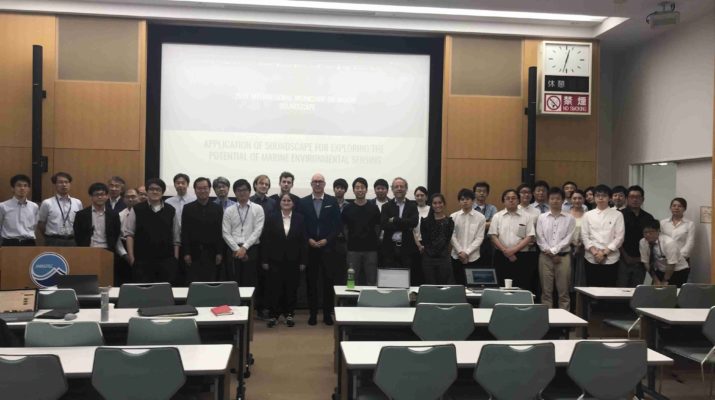[from Deep-Sea Life Vol 13]
Hiromi Kayama Watanabe1, Tzu-Hao Lin1, Tomonari Akamatsu2
1Japan Agency for Marine-Earth Science and Technology (JAMSTEC); 2Fisheries Research and Education Agency, Japan
Deep-sea animals are known to use visual and chemical cues in the extreme darkness and depth environments. Recent studies showed that marine animals also listen to underwater soundscapes in assisting the dispersal, habitat selection, and communication. It is plausible that deep-sea animals sense soundscape, however, interactions between underwater soundscapes and deep-sea fauna remain unclear.
An international workshop on marine soundscape was held at Yokohama Institute for Earth Science, JAMSTEC, on May 22, 2019. In this event, scientists of marine bioacoustics, biology (including deep-sea), and earth science discussed the current research progress, scientific gaps, and future directions of the marine soundscape. Most previous studies were carried out in shallow water due to social requirements and technical limitation. Despite that, several research projects used deep-sea seismometer networks and cabled acoustic observatories to explore the soundscape dynamics in deep-sea. In addition to the ecological applications, the marine soundscape can also be used in geophysical applications, such as monitoring of volcanic eruptions. The integration of deep learning and underwater acoustics should further advance the capability of soundscape-based ecosystem monitoring.
Soundscape monitoring may serve as an alternative for remote sensing of deep-sea biodiversity. However, the lack of information on the acoustic behavior and hearing of deep-sea animals remains a big hurdle for practical applications. We believe that this research field will contribute to elucidate the dynamics of deep-sea ecosystems, under extreme darkness and pressure conditions. Therefore, we wish to extend an invitation to researchers interested in scientific collaboration.
Please contact lintzuhao@jamstec.go.jp for further information.

